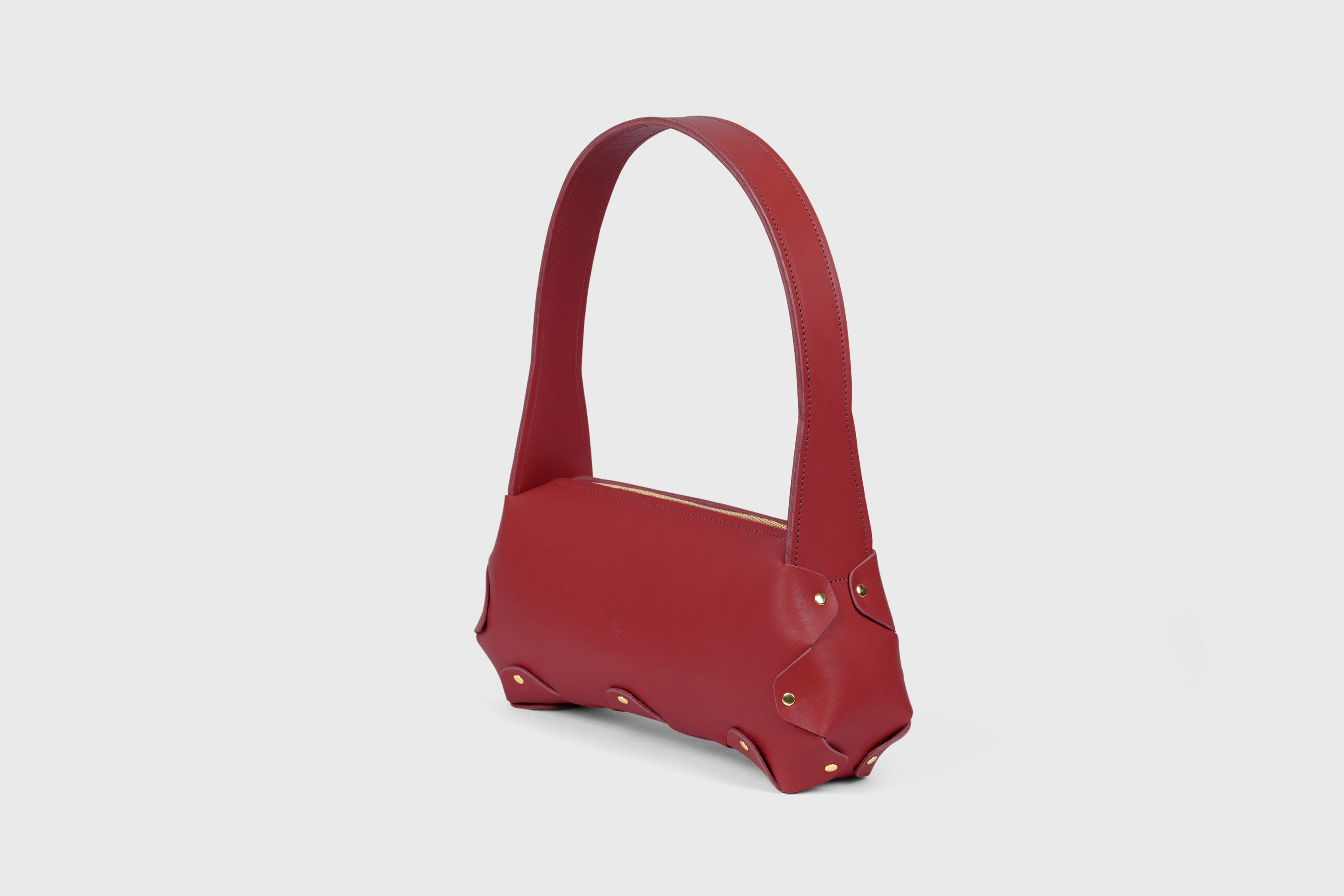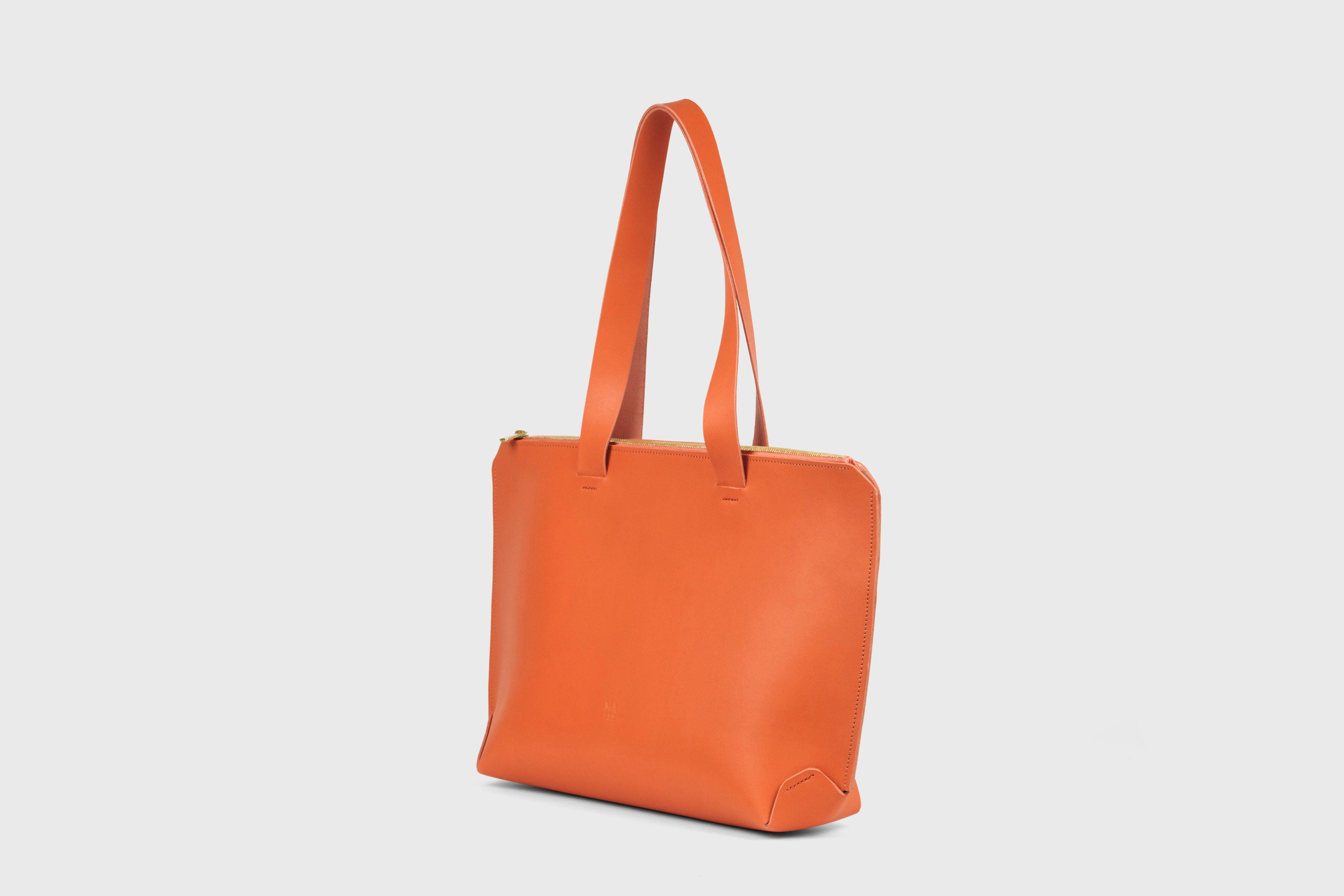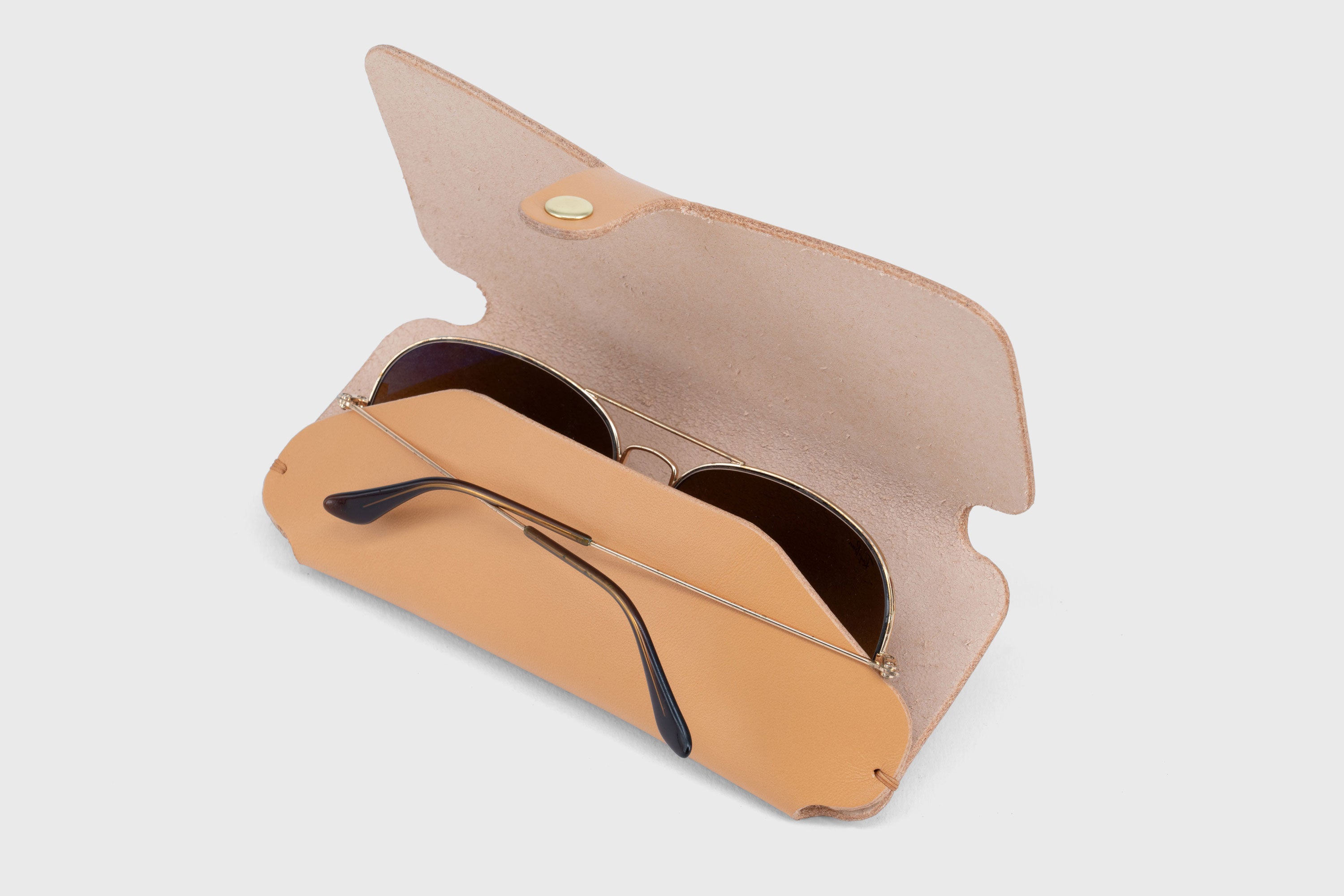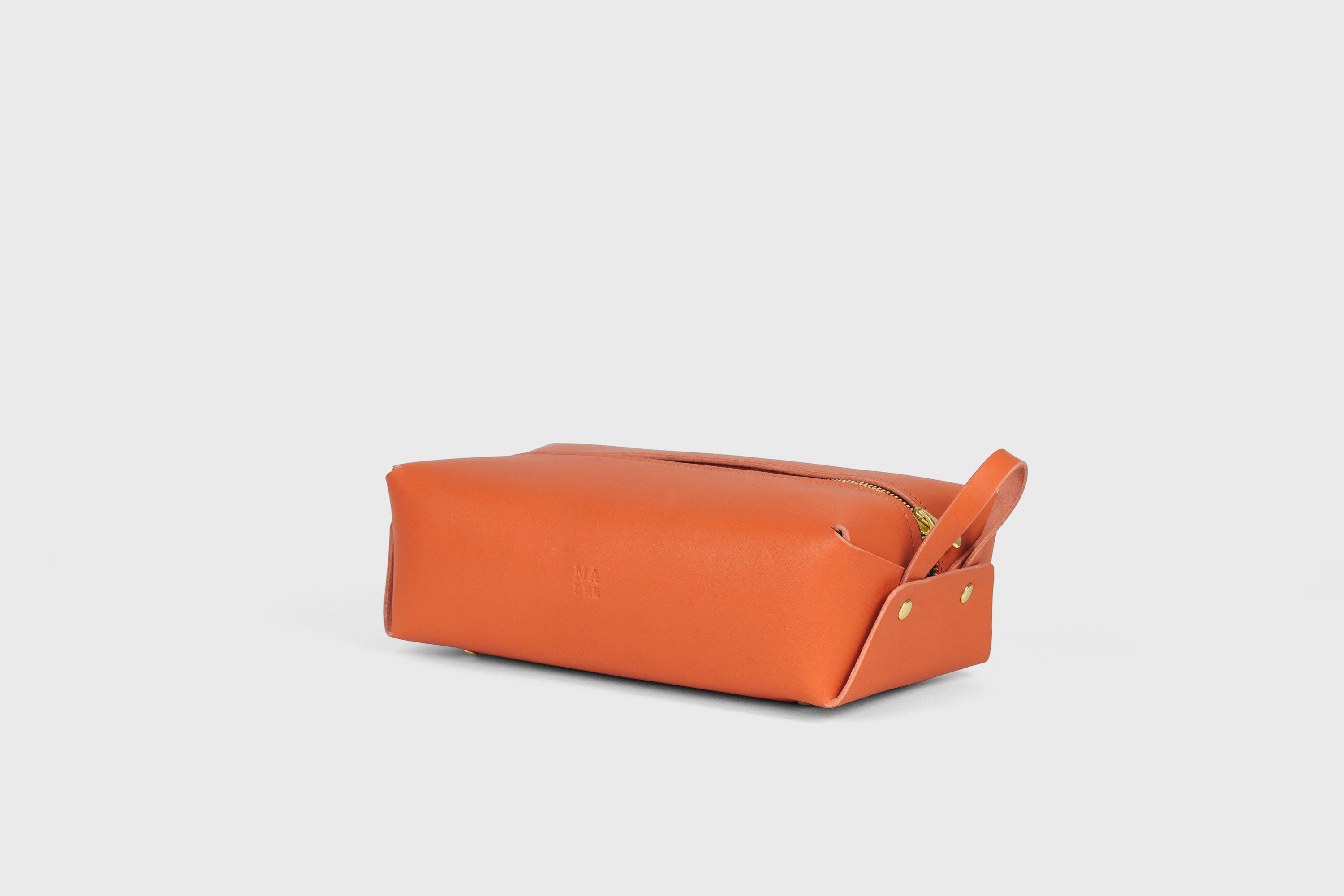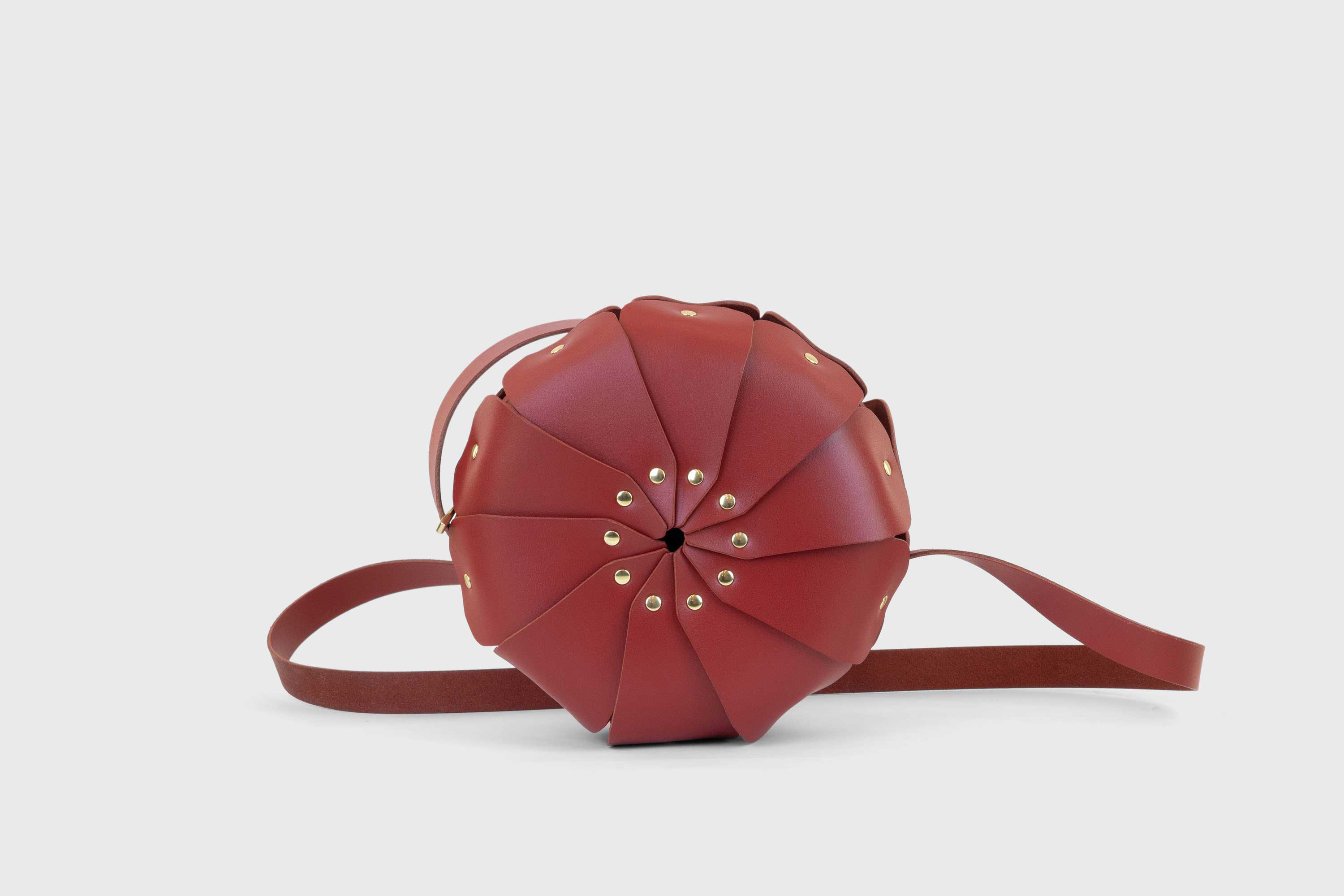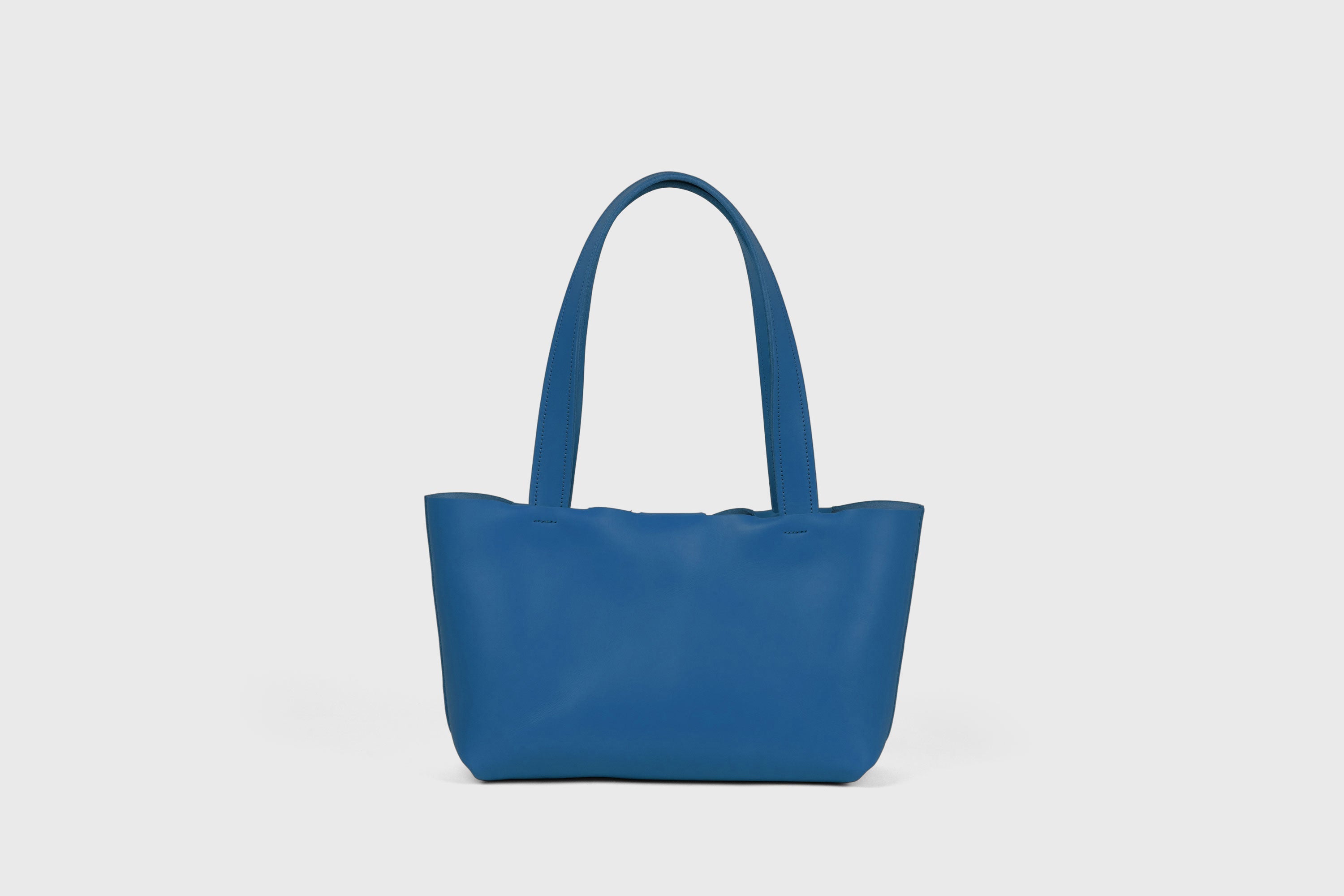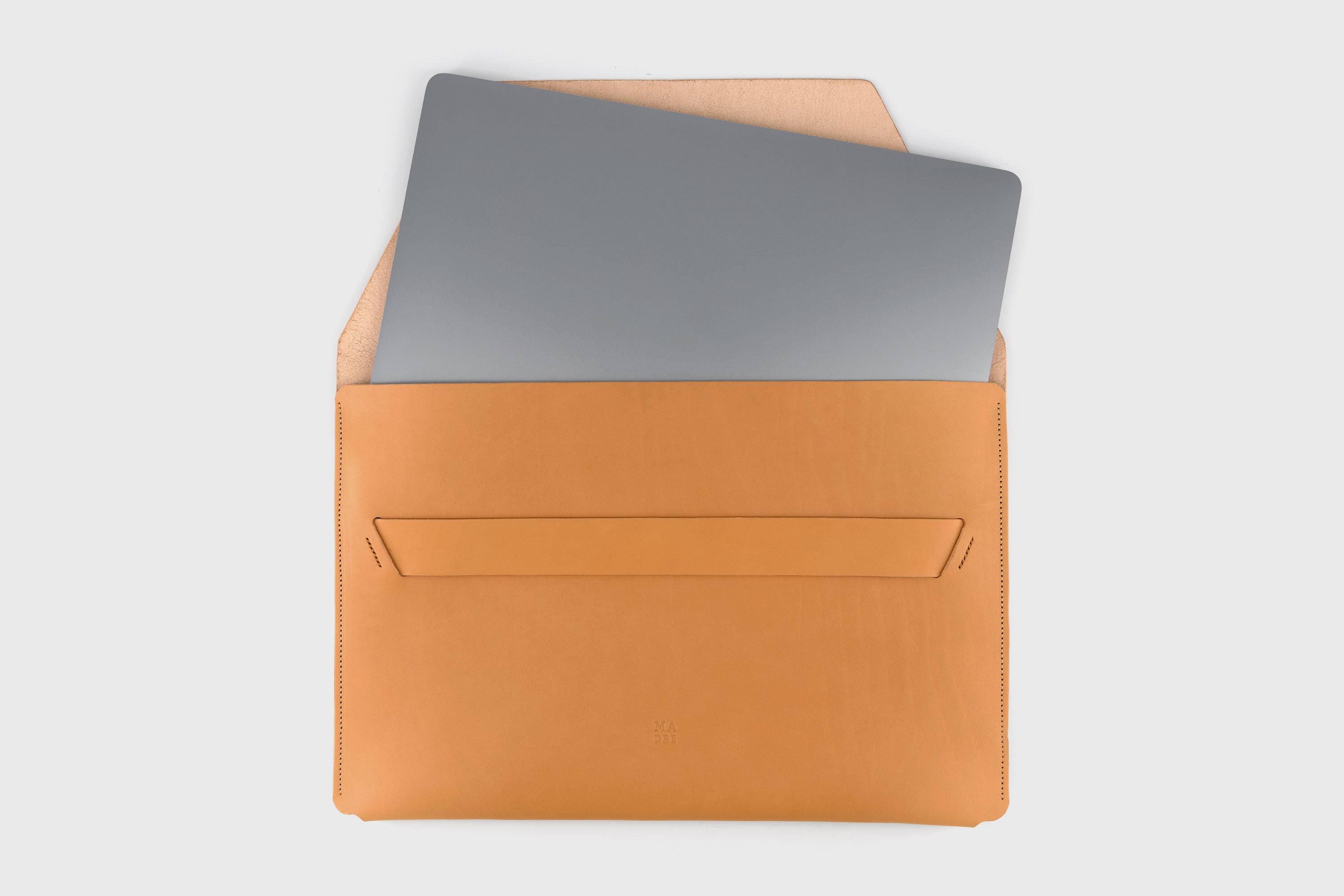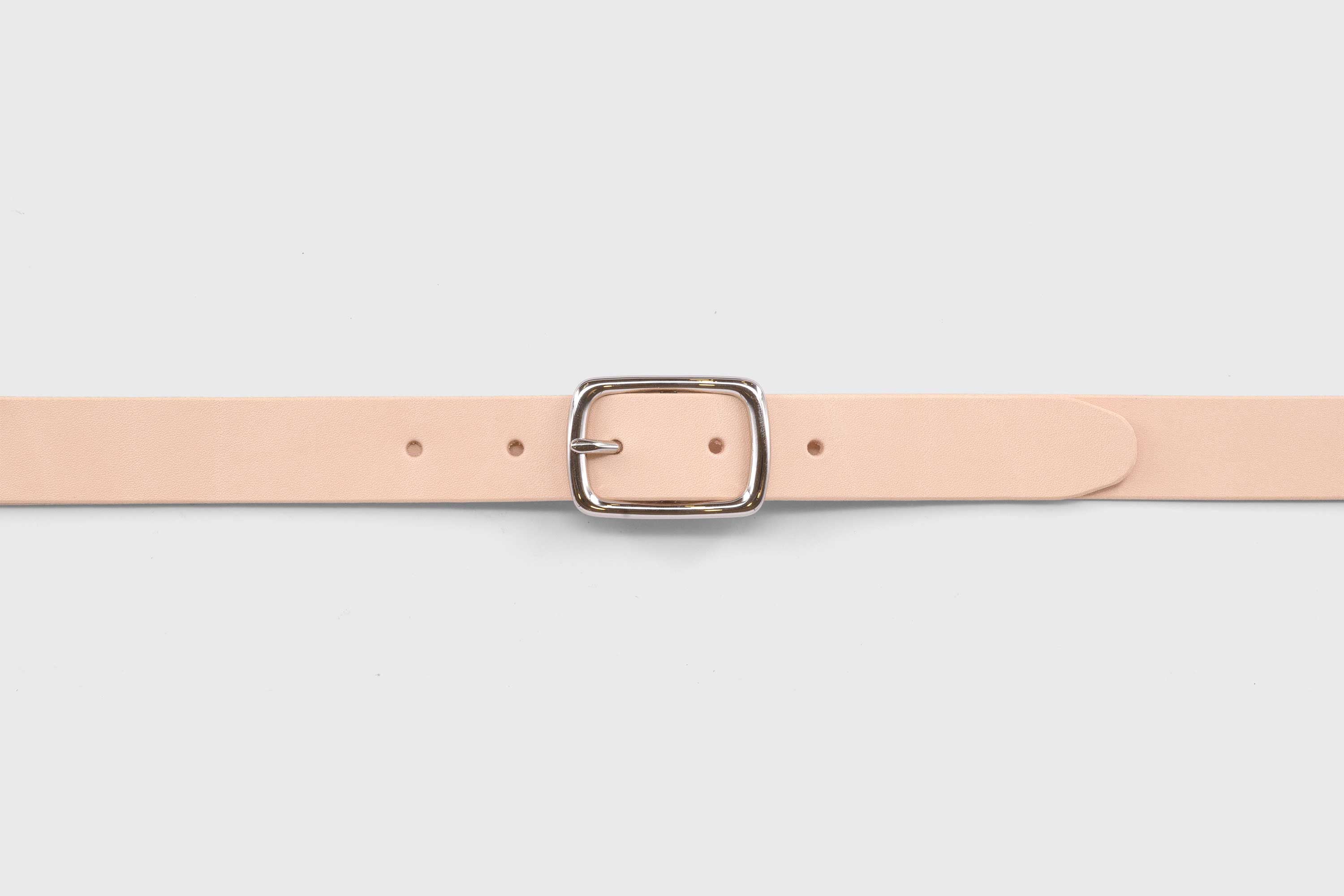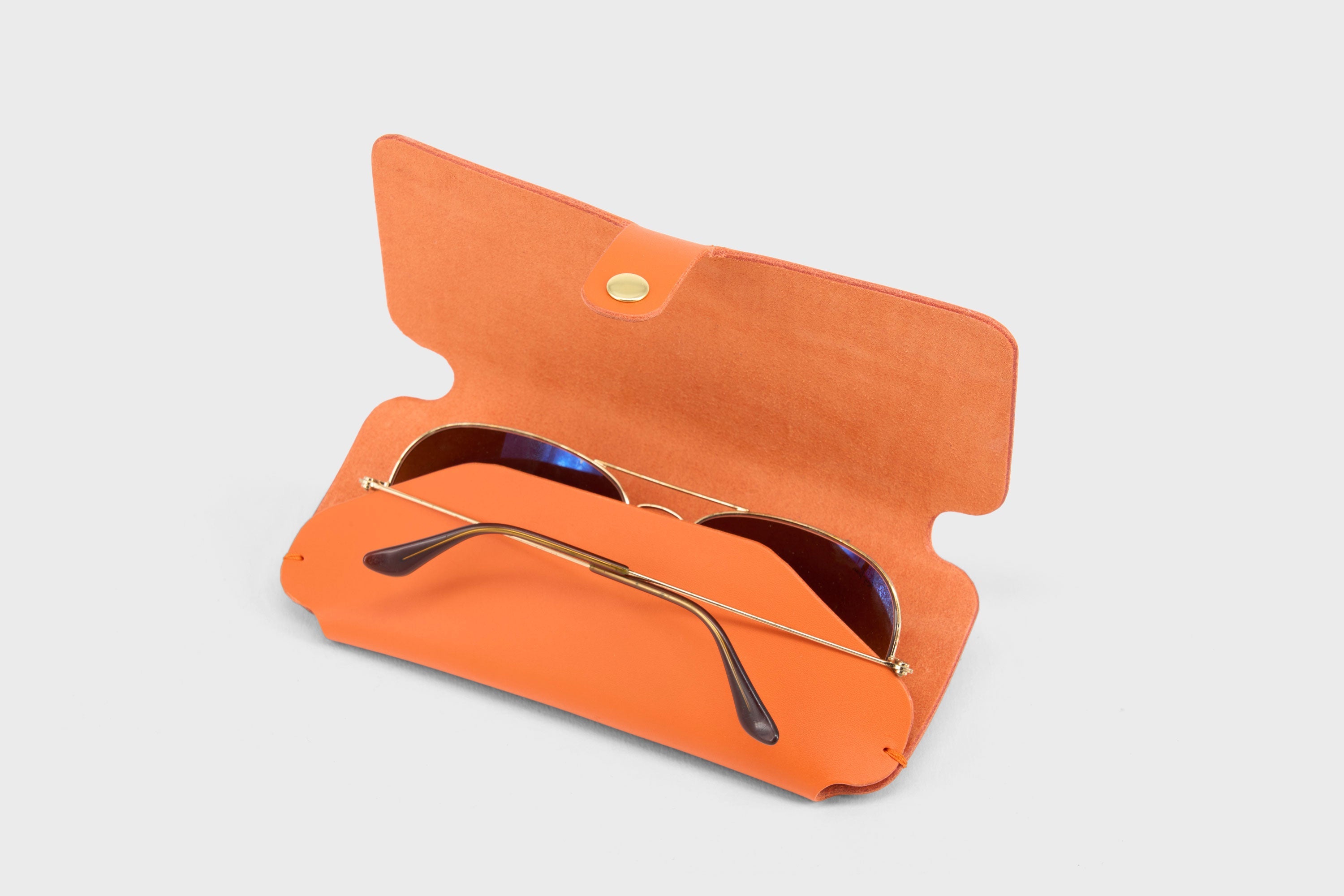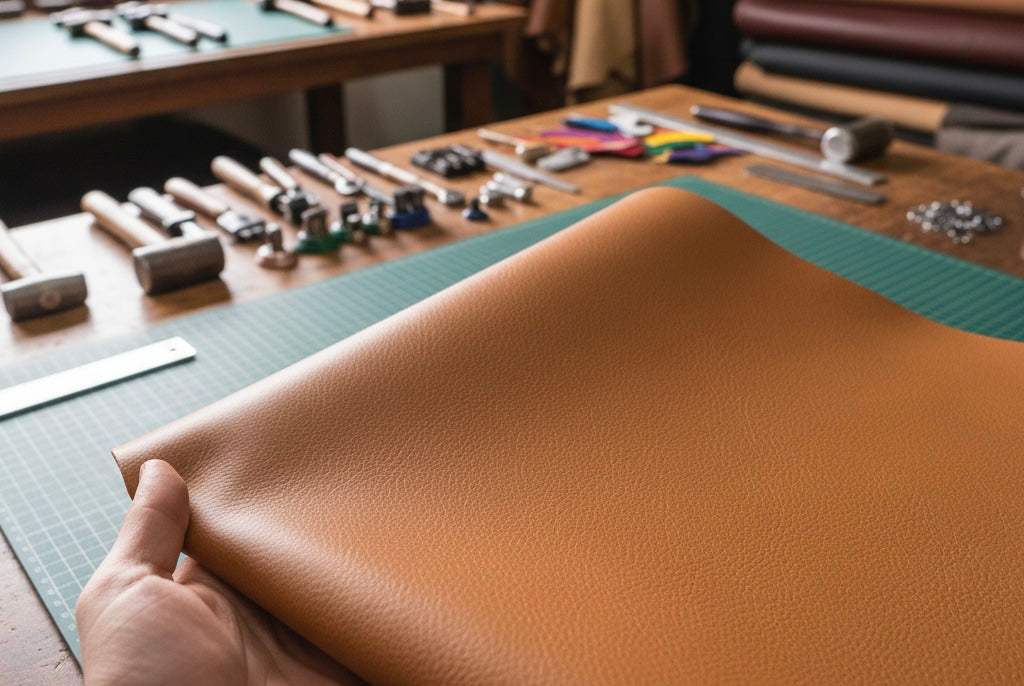Article: Vegetable Tanned Leather
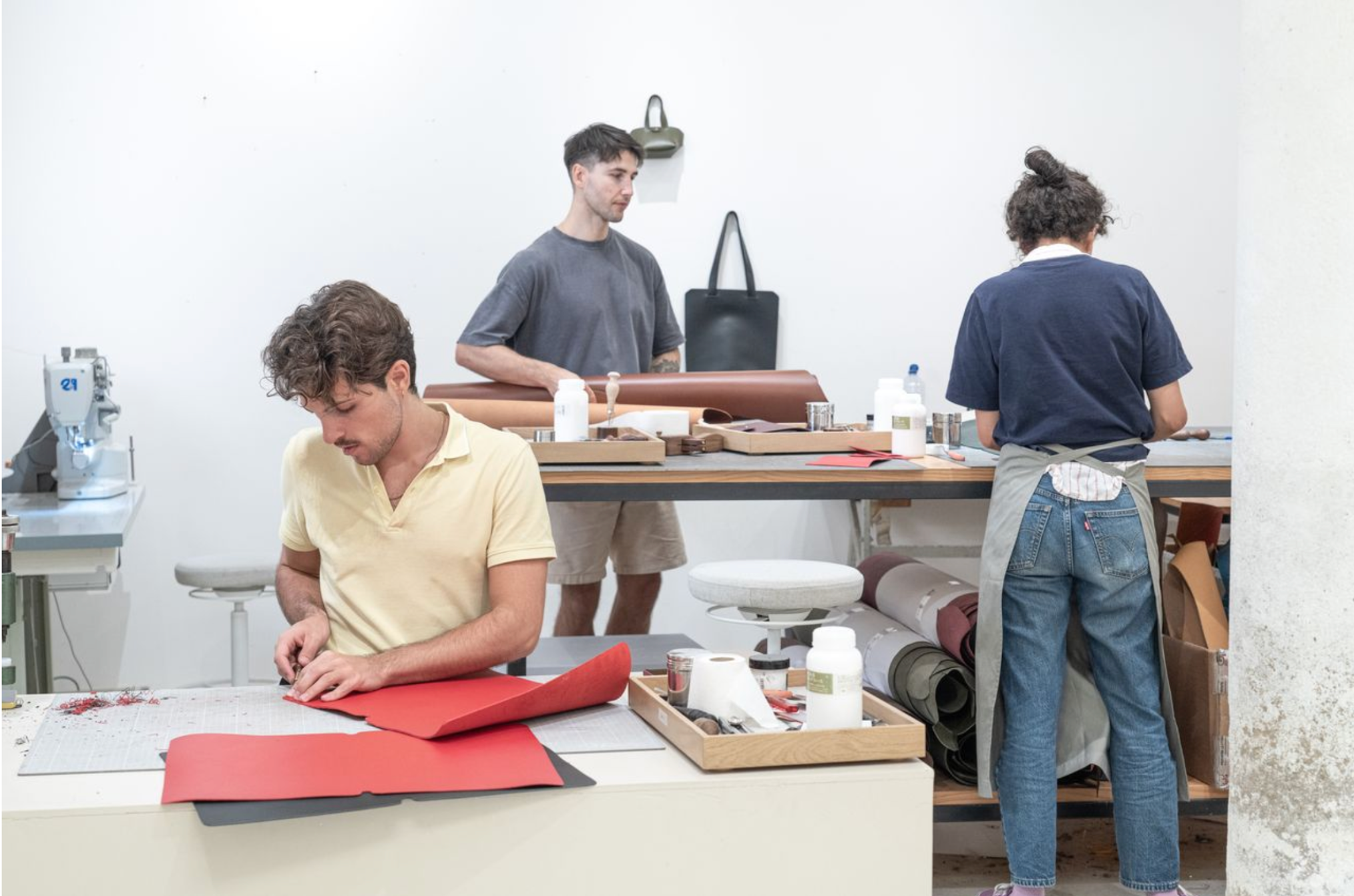
Vegetable Tanned Leather
Vegetable tanned leather is often chosen by people who want leather that feels natural and changes in a clear, visible way. It reacts to sunlight, handling and time, so its appearance keeps developing as you use it. If you want to understand how this material behaves, how it ages and what makes it different from other tanning methods, this article walks you through everything step by step.
Vegetable Tanned Leather Pieces for You
Table of Contents
- What Is Vegetable Tanned Leather?
- The History of Vegetable Tanned Leather?
- How Is Vegetable Tanned Leather Produced?
- Why Should You Choose Vegetable Tanned Leather?
- Environmental and Social Impact of Vegetable Tanned Leather
- Vegetable Tanned Leather vs Chrome Tanned Leather
- Vegetable Tanned Leather vs Vegan Leather
- Why Does Vegetable Tanned Leather Cost More?
- How to Care for Vegetable Tanned Leather?
- Frequently Asked Questions About Vegetable Tanned Leather
- How Vegetable Tanned Leather Fits Into Our Open Kitchen Approach
What Is Vegetable Tanned Leather?
Vegetable tanned leather is leather tanned with plant based extracts. These extracts come from tree bark, roots and other natural sources. The tanning takes time, which allows the leather to keep its natural surface, firm structure and clear grain. There are fewer coatings and fewer artificial finishes compared to fast tanning methods. The result is leather that reacts gradually to sunlight, handling and everyday use.

How It Reacts to Water
When vegetable tanned leather comes into contact with water, the surface darkens temporarily. The dark areas show where moisture sits on the surface. As the leather dries naturally, most of these marks fade. Light rain or small drops are fine as long as the leather is wiped and left to air dry. The reaction is normal and part of how this type of leather behaves.
How It Reacts to Sunlight
Direct sunlight causes the leather to deepen in tone. It happens because the leather responds to UV light. It is not damaged. It simply speeds up the natural color shift that vegetable tanned leather is known for. Many people enjoy this effect because it contributes to the patina.
How It Reacts to Oils
Vegetable tanned leather responds noticeably to oils, including the natural oils from your skin. When you carry or handle a piece often, the contact gradually warms the tone and makes the surface feel smoother. This is a slow shift that appears through normal use. If you prefer quicker softening or a slightly richer color, you can apply a very small amount of leather conditioner. The leather absorbs it gradually and settles into a more relaxed and mature look.

Color Range and Dye Behavior
Vegetable tanned leather accepts dyes differently from chrome tanned leather. The fibers absorb color slowly and deeply, which produces warm, natural tones rather than bright or synthetic shades. Because the dyes interact directly with the plant tanned fibers, the resulting palette leans toward browns, tans, earthy reds and muted neutrals. Intense blues, crisp whites, neon colors or extremely saturated tones are difficult to achieve because vegetable tanning does not support the color stability needed for those finishes. This is why most vegetable tanned leather pieces deepen in tone over time rather than staying uniform.
Structure, Thickness and Physical Behavior
Vegetable tanned leather has a firmer structure than chrome tanned leather because natural tannins bind tightly to the fibers and reinforce them over time. This firmness provides stable thickness that supports clean lines and helps bags and accessories hold their shape without internal reinforcement. When the leather is molded, it retains the form well and develops what makers call “shape memory,” meaning it settles into a defined structure as it ages. It begins more rigid but softens gradually with handling without losing stability. Chrome tanned leather feels soft and pliable from day one, so the two materials behave differently from the beginning.
The History of Vegetable Tanned Leather
Early Origins and Development
The history of vegetable tanned leather begins in ancient cultures more than five thousand years ago. Early evidence from Egypt shows craftsmen using plant extracts such as acacia to preserve hides for sandals, belts and military equipment. Similar techniques appeared in Mesopotamia and the Indus Valley, where hides were soaked in crushed bark, leaves and plant materials to prevent decay.
During the classical period, tanning became a structured craft in Greece and Rome. Roman tanneries used oak, chestnut and sumac to tan hides in a sequence of pits with increasing concentrations of tannin. The layout developed at this time formed the basis of the vat systems still used today.
In the Middle Ages, European guilds standardized the process for saddlery, armor, footwear and bookbinding. Oak bark dominated in northern Europe, while Mediterranean regions relied on sumac. These regional differences helped shape the characteristics associated with vegetable tanned leather.
From the Renaissance through the eighteenth century, vegetable tanning supported fine craftsmanship. Bookbinders, shoemakers and saddlers required leather with structural integrity and long term durability. Tanners refined soaking times, drying methods and tannin preparation. New tannins such as quebracho entered the market through expanding global trade.
Industrial Shift and Modern Production
In the nineteenth century, industrialization introduced faster tanning systems, but vegetable tanning remained essential for applications that required strength and rigidity. When chrome tanning appeared in the late 1850s, production shifted toward speed, and vegetable tanned leather became a more specialized material.
Throughout the twentieth century, regions in Italy, Spain, France and Japan preserved traditional methods through family-run tanneries that maintained long tanning cycles and natural drying processes. Today vegetable tanned leather is valued for structure, longevity and its ability to age naturally. Modern production still follows the same principles of hides, water and plant tannins processed slowly.

How Is Vegetable Tanned Leather Produced?
Vegetable tanned leather relies entirely on tannins extracted from plants. The process is slow and produces leather with firm structure and the ability to develop a rich patina.
Step 1: Preparing and Soaking the Hides
The raw hides are soaked in water to soften the fibers. This removes salts and residues and restores moisture. Proper softening allows the tannins to penetrate evenly during tanning. If the hide is stiff, the tannins will not distribute properly, affecting strength and appearance.
Step 2: Tanning with Natural Tannins
Once softened, the hides are placed into vats with water and tannins from bark, leaves and plant sources such as chestnut, quebracho and mimosa. They remain in these baths for several weeks. During this time, the hides move through solutions with different tannin concentrations and are soaked and drained repeatedly to ensure even absorption. As tannins bind to collagen fibers, the hide stabilizes and becomes leather.
Step 3: Drying and Shaping the Leather
After tanning, the hides are drained, stretched and dried under controlled conditions. Proper drying prevents irregular shrinkage. The leather may be stretched, rolled or pressed depending on its final use. Natural oils or waxes are applied to nourish the fibers, improve flexibility and add initial moisture protection.
Step 4: Finishing the Surface
The dried leather is sanded or buffed lightly to create a smooth, uniform surface and enhance the natural grain without hiding its markings. It may be dyed using traditional methods, resulting in warm tones that deepen with age. Because dyes penetrate the fibers, the patina becomes more pronounced over time.
Final Material
The finished leather is firm, durable and full of natural character. It will continue to change with use, developing depth and color variation that reflect daily handling. The process is slower than modern tanning, but the result is appreciated for longevity and a surface that evolves over time.
Why Should You Choose Vegetable Tanned Leather?
Vegetable tanned leather is a good choice if you want leather that changes in a natural way and becomes more personal with use. It keeps its structure, holds up well over time and develops a patina that many people appreciate. This is why Madre uses it for pieces that benefit from defined shape and long term durability.
Pros of Vegetable Tanned Leather
Ages naturally
Vegetable tanned leather deepens in color and becomes smoother as it is handled, creating a surface that reflects real use rather than wear. The change is gradual and controlled. Instead of looking faded or tired, the leather gains depth and clarity. This slow shift gives each piece a character that develops in a way synthetic finishes cannot reproduce.
Keeps its shape
The tanning process reinforces the internal fiber structure, giving the leather a firm and stable form. This is why the material supports the clean lines of bags and sleeves without collapsing. Once shaped and used, the leather settles into a defined structure and maintains it. Designs that need stability benefit from this natural firmness.
Long lasting
Vegetable tanned leather has dense, strong fibers that respond well to weight, movement and friction. With normal care, it withstands years of daily use without weakening quickly. The material can also be repaired and nourished, which extends its lifespan even further. This longevity is one of the reasons tanneries continue to produce it despite the slower process.
Natural surface
The grain is not covered by heavy coatings, so the surface shows the true character of the hide. This makes the leather more responsive to light, touch and time. The material does not appear artificial or overly uniform, and it ages in a way that remains visually honest. Every mark and shift comes from real use, not from printed or synthetic textures.
Predictable patina
Because the surface is natural, the leather darkens and polishes in a steady and even way. The patina follows a clear pattern rather than appearing randomly. Areas handled more often become slightly brighter and smoother, while the overall tone grows deeper. This consistency is part of the appeal and allows the owner to anticipate how the leather will mature.
Cons of Vegetable Tanned Leather
Firmer at the beginning
Vegetable tanned leather has more structure when new. It softens and becomes more flexible with use, but the initial stiffness can feel unfamiliar to someone expecting a soft material right away. The firmness is not a flaw. It reflects the natural fiber structure and is the reason the leather keeps its form over time.
Light water resistance only
The material reacts to water because the surface is not coated. Drops can leave temporary marks, especially when the leather is new. These marks usually fade as the leather dries, but soaking should still be avoided. The material performs best when moisture is managed with simple care such as patting dry and letting it air dry naturally.
Darkens with sunlight
Exposure to light gradually warms and deepens the color. This is normal for vegetable tanned leather and part of its aging behavior, but it does mean the original shade will shift over time. People who want a color that remains exactly the same may prefer chrome tanned alternatives.
Visible natural marks
Because the surface is not heavily corrected, small variations and natural signs from the hide remain visible. Some people appreciate this because it reflects the authenticity of the material, but others may prefer a more uniform appearance. These markings do not affect durability; they are simply part of using a natural surface.

Vegetable Tanned Leather Ages
Vegetable tanned leather develops patina as it is used. The surface becomes smoother, the tone deepens and areas that are handled often become slightly darker. These changes appear gradually and reflect normal daily handling.
If you want a deeper explanation of how patina forms, you can read our guide Leather Patina: The Beauty of Age.
It ages beautifully in real use. Here is an example from one of our own Madre pieces so you can see how the color and surface shift over time. This gives a clear idea of what to expect when the leather settles into its long term look.
Environmental and Social Impact of Vegetable Tanned Leather
Environmental Impact
Vegetable tanning uses tannins extracted from bark, leaves and other plant materials, so the process relies on biodegradable inputs rather than metal salts. The tanning baths can be used repeatedly and are refreshed over time, which reduces the volume of wastewater. When wastewater is treated, it contains organic substances instead of chromium or other metals, making treatment simpler and less hazardous. Solid by-products from the process are also mainly organic and can often be repurposed or composted depending on local regulations. Because vegetable-tanned leather is finished with minimal coatings, it does not rely heavily on synthetic films or petroleum-based finishes. The material is durable and designed to last for many years, which reduces the need for replacement and lowers long-term material consumption.
Social and Cultural Impact
Vegetable tanning is concentrated in regions with long-standing craft traditions, including parts of Italy, Spain, France and Japan. Many tanneries are small, family-run operations where the methods are passed down through apprenticeships rather than industrial training programs. This structure supports specialized local employment and helps maintain skills that would disappear without continuous practice. The slower production cycle requires experienced workers who can judge the condition of hides and tanning baths by sight and feel, which keeps the process rooted in human expertise instead of automated systems. These tanneries often contribute to local economies built around small workshops, leatherworkers and independent makers rather than large centralized factories. Because production is smaller in scale and closely monitored, traceability is usually stronger and customers can follow where the hides and tannins originate with more clarity.

Vegetable Tanned Leather vs Chrome Tanned Leather
| Feature | Vegetable Tanned Leather | Chrome Tanned Leather |
|---|---|---|
| Tanning method | Uses plant based extracts such as oak and chestnut | Uses chromium salts and synthetic tanning agents |
| Time required | Slow process that can take several weeks | Fast process that can take only a few hours |
| Feel at the beginning | Firm and structured | Soft and flexible from day one |
| Surface look | Natural grain with visible variations | More uniform appearance with fewer natural marks |
| Aging | Develops patina and darkens over time | Color stays stable |
| Water behavior | Light water resistance and needs proper drying | More resistant to daily moisture |
| Sunlight reaction | Darkens and warms in tone | Minimal change |
| Durability | Strong fibers and long lasting structure | Durable but more flexible |
| Best for | Structured bags, sleeves, belts, items that benefit from patina | Soft bags, fashion items, bright or uniform colors |
| Environmental impact | Lower chemical load and traditional method | Higher chemical use |
Vegetable tanned leather is the better option if you want long term strength, a clear natural surface and visible aging that makes the piece more personal over time. It is well suited for structured bags, sleeves and accessories because the leather stays stable and develops a patina that reflects real use. Chrome tanned leather is softer right away and its color stays the same, which works for items that rely on bright or uniform shades, and it handles light moisture slightly better. The trade off is that chrome tanning involves heavier chemical processes and the leather tends to feel more coated and less natural. It also does not age in a meaningful way. Both types are durable, but if you want a material that stays strong, holds its shape and improves with use, vegetable tanned leather is the more reliable choice.
Why Does Chrome Tanning Dominate Modern Production but Not Our Workshop?
Chrome tanning became the industry standard because it is fast, predictable and easy to scale. The process takes about a day, which allows factories to produce large quantities of leather with consistent softness and color. The surface can be corrected or coated, so tanneries can use more hides with visible marks. Bright colors and uniform batches are also easier to achieve, which is important for brands that rely on mass production.
Vegetable tanned leather follows a slower method. The hides move through plant based tanning baths over several weeks, and the drying must happen naturally. This requires more space, manual oversight and a stricter hide selection because the grain cannot be covered or altered. The material begins firm rather than soft, so it does not fit automated assembly lines designed for chrome tanned leather.
These differences explain why chrome tanning dominates, but they also clarify why we continue to work with vegetable tanned leather. Our designs depend on materials that keep their structure, and vegetable tanned fibers tighten as they dry, giving the leather stability without added reinforcements. The surface reacts gradually to light and handling, creating a clear and steady patina instead of staying unchanged.
Vegetable tanned leather also matches the way our workshop operates. Each piece is cut, shaped and finished in the same space where it is presented, which allows us to work with the material directly as it responds to folding, shaping and burnishing. The leather reacts predictably to these steps, which gives us control over the form and finish. Chrome tanned leather behaves differently. It remains soft, stretches more easily and does not hold defined shapes in the same way, so it is not suitable for the structured pieces we make.
Why Does Vegetable Tanned Leather Cost More?
Vegetable tanned leather is more expensive because the process takes longer and relies on manual work at each stage. The hides move through plant based tanning baths over several weeks. The tannins come from natural materials such as oak, chestnut and quebracho.
Only a small portion of hides can be used because the surface is not masked by coatings and must be clean from the start. Drying and finishing are done slowly by experienced craftsmen.
The final material reflects this time and attention with a natural surface, strong internal structure and long lifespan.
Vegetable Tanned Leather vs Chrome Tanned Leather: How to Tell the Difference
If you are wondering how to tell vegetable tanned leather and chrome tanned leather apart before buying, the table above gives you a clear overview of the differences you can observe right away. Color behavior, grain appearance, scent, reaction to water and the look of the edges all offer reliable clues.
|
Category |
Vegetable Tanned Leather |
Chrome Tanned Leather |
|
Color |
Warm natural tones such as beige, tan, brown, muted reds. Rarely found in bright saturated colors. |
Can appear in any color including bright blues, greens, pastels and uniform blacks. Colors look even and extremely consistent. |
|
Surface Appearance |
Visible grain with small natural variations. The surface looks honest, not coated or glossy. |
The surface often looks perfectly smooth or corrected. The grain pattern may look too uniform or embossed. |
|
Water Test (Simple Drop Test) |
A drop of water darkens the spot almost instantly. |
Water usually beads or sits on top without darkening. |
|
Sunlight Reaction (Quick Exposure) |
Brief exposure warms the tone slightly or raises contrast. |
No visible shift under short exposure. |
|
Edge Inspection |
Edges look more fibrous and natural because the leather has no heavy coating. |
Edges often have a painted or plastic-like appearance due to finishing. |
|
Scent |
Clear earthy smell from plant extracts. Distinct, natural, slightly woody. |
Very light or neutral smell. Sometimes slightly chemical. |
|
Flex Test (Gently Bending a Sample) |
Leather resists bending slightly and shows natural grain movement. |
Bends very easily and uniformly with little grain movement. |
|
Color Depth |
Color appears to come from within the fibers. Slight tonal variation across the surface. |
Color appears to sit on the surface. Very uniform, often perfectly flat. |
Vegetable Tanned Leather vs Vegan Leather
What is the main difference between vegetable tanned leather and vegan leather?
Vegetable tanned leather is made from animal hides that have been preserved using tannins extracted from bark, leaves and other plant materials. The tanning cycle is slow and produces a material with natural grain, firm structure and the ability to change with light and handling.
Vegan leather is a synthetic material created to imitate leather. It is usually made from plastics such as polyurethane or PVC applied to a textile base. The surface pattern is printed or embossed, and the coating gives the material its appearance. The internal structure does not come from natural fibers but from fabric and plastic layers.
Which is more sustainable: vegetable tanned leather or vegan leather?
Vegetable tanned leather relies on biodegradable plant tannins and hides that would otherwise be discarded. The tanning baths can be reused, and the waste contains organic matter rather than metal residues. Because the leather lasts for many years, it does not need frequent replacement.
Vegan leather depends on plastic coatings and synthetic films. Production involves higher energy use and chemical processing, and the material does not biodegrade. When discarded, it remains in the waste stream for a long time. From an environmental standpoint, vegetable tanning has a smaller long term footprint because the inputs are natural and the material remains usable for decades.
Which material is more durable?
Vegetable tanned leather has strong internal fibers because the natural grain layer remains intact. The structure becomes more stable as the leather dries and settles, and the material can be repaired when needed. With proper care, it can last for decades and often becomes stronger in form as it ages.
Vegan leather relies on a surface coating for its appearance. Over time this coating can dry, crack or separate from the fabric backing. Once this happens the material cannot be restored, and the item usually needs to be replaced. Vegan leather has a shorter lifespan and is not suited for long term use.
What about biodegradability and environmental impact?
Vegetable tanned leather is made from natural fibers and plant tannins. When disposed of, it breaks down more easily than synthetic materials, especially when it has minimal surface coatings. The production process creates less hazardous waste because it does not use metal salts.
Vegan leather contains plastics that do not decompose. The material breaks down into smaller particles rather than returning to natural components. This makes disposal more difficult and increases long term environmental impact. Most vegan leather relies on petroleum based coatings that persist in landfill conditions.
Does vegan leather look and feel like real leather?
Vegan leather can imitate the look of leather from a distance, but up close the differences are clear. The grain pattern is usually uniform because it is printed or embossed. The surface feels smoother and more synthetic because it is a plastic film rather than natural fiber. The material does not have the depth or variation of vegetable tanned leather, and the scent is neutral because there are no plant tannins or natural oils.
Vegetable tanned leather has visible grain, natural variation, a warm dry feel and an earthy smell from the plant extracts used in tanning.
Can vegan leather develop a patina or age like real leather?
No. Vegan leather does not develop patina because the surface is a synthetic coating. The material stays the same until the coating begins to wear down, which usually shows as peeling or cracking rather than improvement.
Vegetable tanned leather changes gradually. The color deepens, the surface becomes smoother and areas that are handled often develop a warm polished look. This aging is one of the reasons the material is valued.
Which one is more expensive?
Vegan leather is usually cheaper because it can be produced quickly with lower grade materials and automated systems. The production cost is lower and the material is designed to be replaced more frequently.
Vegetable tanned leather is more expensive because the tanning process takes several weeks, uses natural extracts and requires hides with clean grain. Drying, finishing and selection demand manual work. The higher price reflects the time, material quality and longevity of the final product.
At Atelier Madre we work with full grain vegetable tanned leather because the material aligns with how we design and produce our pieces. We use only the highest graded hides from tanneries in and around Barcelona and select vachetta, calf, novillo and cow leather that show clean grain and natural strength. Full grain leather keeps the original surface of the hide, which means the fibers stay intact. This is why the material is durable, why it develops patina and why it lasts decades when cared for. Vegan leather cannot offer the same depth, longevity or repairability because the surface is a synthetic coating rather than a natural grain.

How to Care for Vegetable Tanned Leather
How should I care for it during daily use
Wipe the surface with a soft dry cloth and avoid letting water sit on the leather. If it gets slightly wet, pat it dry and let it air dry naturally. Regular handling helps the leather soften and develop an even patina.
How should I store it when I am not using it
Keep the item in a breathable fabric pouch or on a shelf with good airflow. Avoid plastic bags, direct sunlight and heat. Empty the inside before storing so the shape stays clean.
What should I do if the leather gets dirty
Start by wiping gently with a dry cloth. If the dirt remains, use a lightly damp cloth with small, gentle strokes. Do not scrub and do not use soaps, alcohol or chemical cleaners. If the leather feels dry afterward, apply a very small amount of neutral leather conditioner.
Frequently Asked Questions About Vegetable Tanned Leather
What is vegetable tanned leather?
It is leather tanned with plant based tannins extracted from bark, leaves and wood. The process takes several weeks and tightens the fibers naturally, which is why the leather develops a gradual patina over time.
Is vegetable tanned leather real leather?
Yes. It is made from full animal hides with the natural grain layer intact. If you want to understand how this differs from lower grades often labelled as “genuine leather,” you can read our guide on genuine leather.
Is vegetable tanned leather vegan?
No. The tannins come from plants, but the base material is still animal hide.
Why is it called vegetable tanned?
Because the tanning agents come from plant materials rather than chromium salts or synthetic chemicals.
Does vegetable tanned leather smell different?
Yes. The scent comes from the natural tannins absorbed into the fibers. It has a warm, earthy smell that chrome tanned leather does not have.
Why is vegetable tanned leather so expensive?
The tanning process is slow, hide selection must be higher, and much of the work is done manually. The final material has natural grain, strong structure and can last decades, which increases its value.
Is vegetable tanned leather better than chrome tanned leather?
It depends. Vegetable tanned leather offers structure, patina and long term stability. Chrome tanned leather offers immediate softness, bright colours and quick production.
Is vegetable tanned leather good quality?
Yes. The grain layer remains intact, which keeps the fiber density high. This allows the leather to hold shape and withstand long term use.
Why is the leather so stiff at first?
The fibers tighten during tanning and drying. As the leather absorbs natural oils from your hands, it softens slowly and forms a patina. You can learn more about this process in our article on leather patina.
Is vegetable tanned leather waterproof?
No. Water darkens the surface temporarily because the fibers absorb moisture. The marks fade as the leather dries naturally. Soaking should be avoided.
Does vegetable tanned leather scratch easily?
Light marks may appear because the surface has minimal coating. These marks blend as the patina develops and do not affect structural strength.
How do I clean vegetable tanned leather?
Use a soft dry cloth. For deeper cleaning, use a barely damp cloth with light movements. Do not use soaps, alcohol or chemical cleaners. Condition only when the leather feels dry.
Does vegetable tanned leather change colour over time?
Yes. Light, oils and handling gradually deepen the tone. If you want a closer look at how this evolution works, see our guide on patina development.
What is a patina?
Patina is the natural darkening and smoothing that appears with use. It forms because tannins react to light and oils over time.
How long does vegetable tanned leather last?
With normal care, it can last decades. The fibers tighten with age, and the surface can be repaired and reconditioned when needed.
Is vegetable tanned leather eco friendly?
It uses plant based tannins and produces organic wastewater, making the process lower impact than chrome tanning. The long lifespan also reduces replacement needs.
Is vegetable tanned leather biodegradable?
Yes. The fibers and tannins break down naturally over time, especially when surface coatings are minimal.
Are toxic chemicals used in vegetable tanning?
No chromium salts are used. Most of the process relies on plant extracts, water and natural oils.
What is the difference between vegetable tanned and chrome tanned leather?
Vegetable tanned leather ages, darkens and remains firm. Chrome tanned leather stays soft, flexible and consistent in colour. Production time is the biggest difference.
What is the difference between vegetable tanned leather and genuine leather?
Vegetable tanning refers to the tanning method. Genuine leather refers to a grade of leather, usually made from lower parts of the hide. You can read more in our detailed guide on genuine leather.
How Vegetable Tanned Leather Fits Into Our Open Kitchen Approach

We are an independent atelier for exclusive leather products based in Barcelona. Since 2018 we have handcrafted minimalistic pieces using traditional production methods. Our work combines classic German design language with modern organic geometry. The materials we use come from trusted suppliers in and around Barcelona, and every product is made and shipped directly from our workshop.
At Atelier Madre we design and produce each piece in the same space where we present it. Every item is cut, stitched and finished inside our Barcelona studio, and visitors can see the full process as it happens. We work in small batches, adjust pieces when requested and keep every step visible so people understand exactly how their item comes to life.
Vegetable tanned leather fits naturally into this way of working because the material behaves in a clear and predictable manner. Its grain is not masked by surface treatments, so the texture is visible from the beginning. The color shifts gradually with light and use, and the changes are easy to follow. When the leather is on our workbench, customers can see how it reacts to cutting, shaping and burnishing. The openness of the material supports the openness of the workshop, and the final piece reflects the process that shaped it.
If you are looking for a vegetable tanned leather bag or accessory that will age naturally and remain dependable for years, our products are made with this approach from start to finish.


